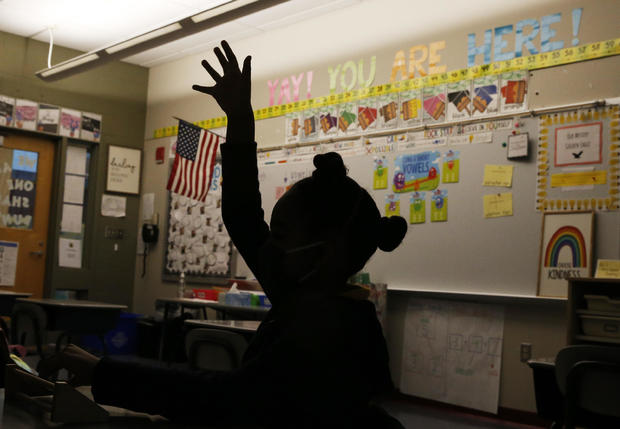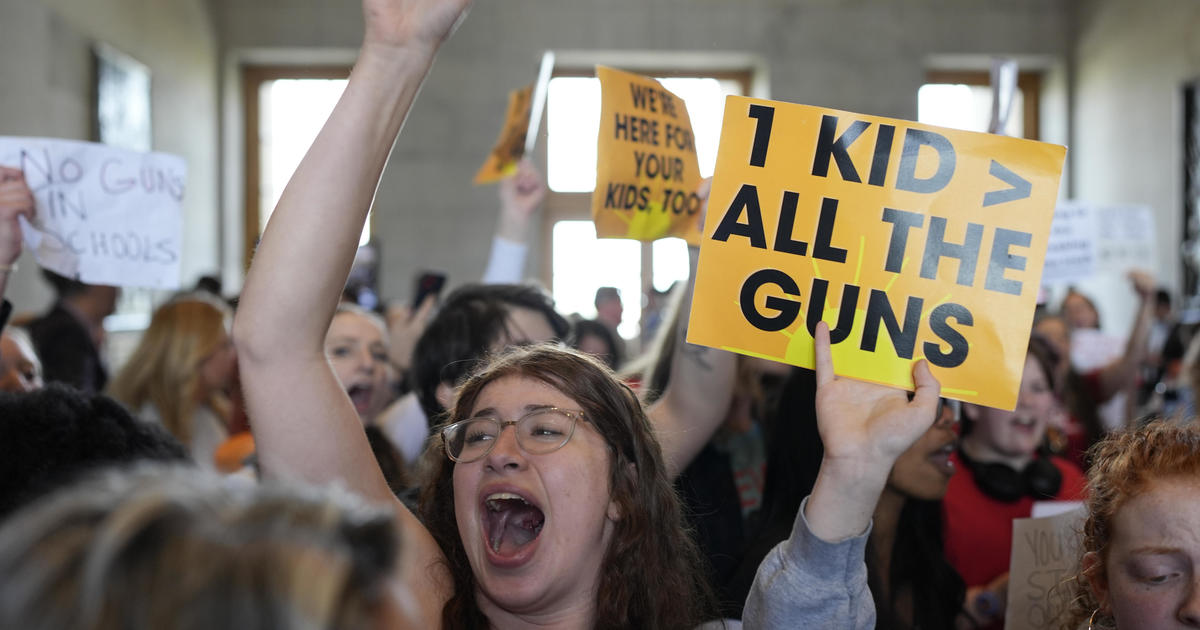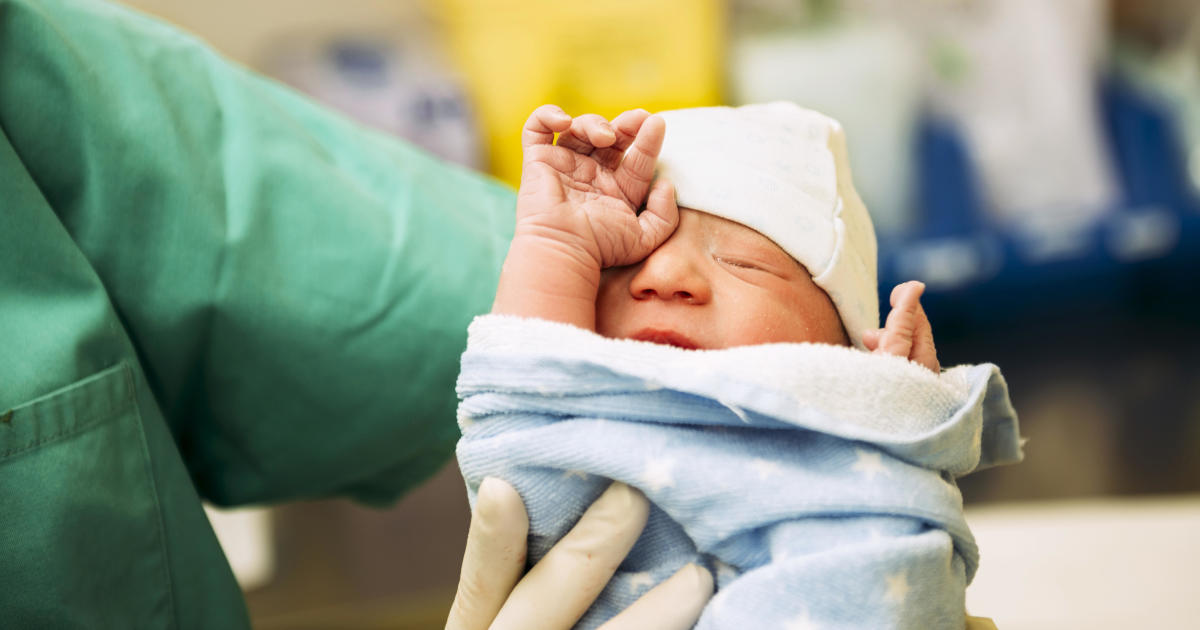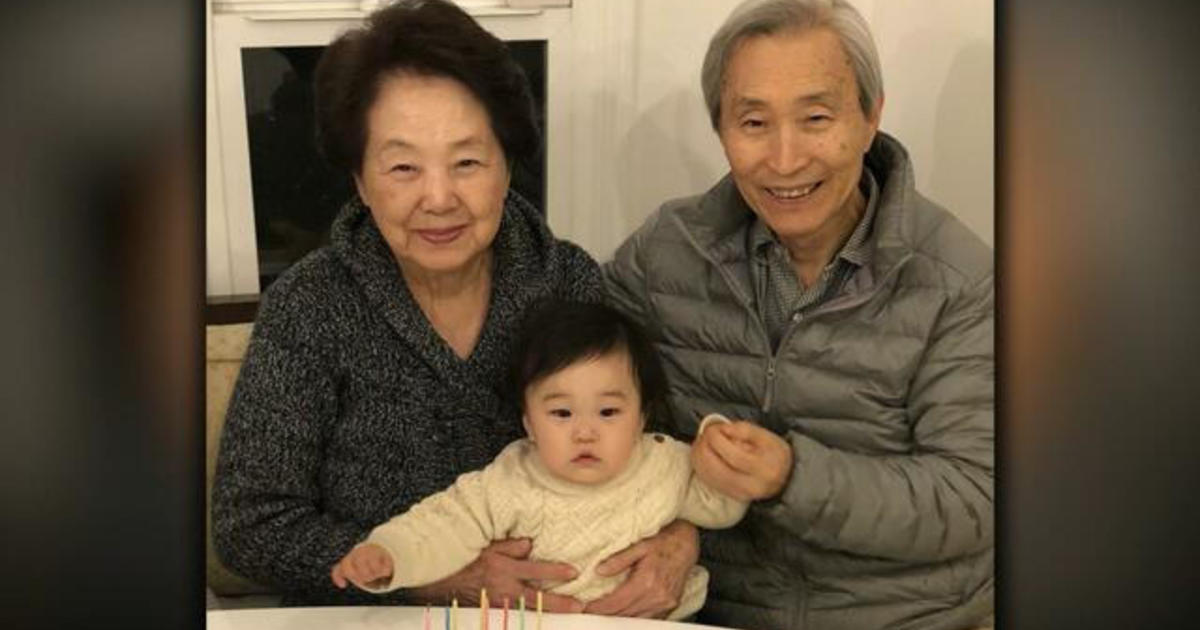"COVID teaching is so hard": Educators share fears and frustrations about school in pandemic
The coronavirus still haunts Sylvia DelaCerna, a former special education paraprofessional, who found out she tested positive on December 1.
"I felt like I was dying," she told CBS News. "I was running fevers every day, you know, just having all of these physical ailments… My kids were afraid because they knew that I was like wasting away."
At Belleaire Elementary School in Bellevue, Nebraska, where she worked, multiple teachers tested positive for the virus during the fall. On November 20, the school sent out an email notice that informed DelaCerna, a 63-year-old Black woman, about what the school deemed a "low risk exposure."
"A staff member at Belleaire Elementary School has been diagnosed with COVID-19 (coronavirus)," the memo said. "You have been identified as having a low-risk exposure to an individual confirmed with COVID-19. You should be closely monitored for symptoms of COVID-19 … including: fever, chills, body aches, headache, sore throat, cough, and loss of taste and smell. If you develop any of these symptoms, contact your healthcare provider and continue to stay at home."
Some of her students, on the autism spectrum and with behavioral issues, wouldn't wear masks and would bite, scratch and spit on her. When DelaCerna started feeling sick around Thanksgiving, with symptoms like nausea and body aches, she says the school neglected her concerns.
"I actually went to a school nurse, which was very disheartening," she said. "She just kind of blew me off."
She decided to quarantine anyway, and while in quarantine she received her positive test result. After notifying Belleaire of her diagnosis, she says the school pressured her to come back to the classroom before the recommended isolation period had ended. The school, she added, said that she wasn't a COVID emergency, meaning she wouldn't get paid during isolation past the maximum of 10 days, which resulted in DelaCerna losing income. CBS News reached out to Bellevue Public Schools and Belleaire, which said it could not comment on a specific personnel matter.
"You don't have any of the 'fat free' symptoms," she said a lead teacher told her — an apparent reference to loss of taste and smell — though she experienced a range of other symptoms of the virus, which has now claimed more than 485,000 lives nationwide.
"Not once did they say, 'Are you OK,' 'Do you feel well,' any of that. Just pressuring me to come back to work."
A spokesperson for the school district said there has been a less than 5% positivity rate and minimal spread within its schools. But DelaCerna decided to quit working at Belleaire just before Christmas.
Today she can't return to any classroom because she has not been medically cleared since her diagnosis.
"The residual effects, like, still linger," she said. "People need to understand this doesn't just go away when COVID goes away. I still have the numbness and the tingling in my extremities. I still have most of the symptoms that I had, you know, when I was in the heavy throes of COVID."
More than two months after testing positive, DelaCerna is still suffering both the physical and mental consequences of her ordeal.
"I was so hopeless when I was in the throes of COVID," she said. "I am not where I should be mentally, emotionally, nothing. I'm depressed. I have anxiety."
Stress from this school year hasn't helped Colin Krysl's battle with depression or anxiety either. Krysl teaches Spanish at Corner Canyon High School outside Salt Lake City, Utah, which opened in-person classes to its students in August. He second-guesses his decision to become a teacher due to the mental toll.
"I lay awake in bed before my alarm goes off just dreading going into work," he told CBS News. "Will this be the day I get sick?"
The fifth-year educator has been teaching in the classroom and remotely. He has not tested positive for the virus, but it is still his most challenging year.
According to Krysl, it's impossible to socially distance in his classroom, his students rarely wear masks, and the school's hybrid learning demands have drained his teaching arsenal.
"I didn't even feel this out of place in the classroom or ineffective as an educator [during] my year of student-teaching," he said. "I've had no wins this year."
The emotional toll of the pandemic and its effect on Utah's educators, where more than 70% of all K-12 students have the option of in-person instruction, is not talked about enough, he believes.
"COVID teaching is so hard this year because we don't have the ability to have a good lesson," he said. "If you can't make that difference in the world, then why do it?"
Canyons School District encourages employees to take advantage of its free assistance programs, like seeing a crisis counselor, if they are experiencing difficult emotions, according to a spokesperson. But each day Krysl goes to work he is also worried about the risk of inadvertently harming those around him.
"My biggest fear is getting someone else sick and they die," he said. His fears have eased a bit; he is cautiously optimistic as the state's case numbers are decreasing. He also received the first dose of the vaccine recently.
Last week the Biden administration released its school reopening guidelines, which focus on mitigation strategies to reduce the risk rather than making sure all teachers get vaccinated. Krysl is frustrated by this absence.
"ANYTIME schools reopening comes up, they always downplay the teacher concerns," he wrote in a statement. "We were told not to have Super Bowl parties, not see our families over the holidays, I postponed my wedding over the summer, but we can have kids [come] into overcrowded classrooms. Almost 500,000 people have died so I'm sorry that we have some reservations and want to get the vaccine."
Krysl and DelaCerna both live in Republican-led states where many communities pushed schools to stay open for in-person learning throughout the school year. The CDC says data show that with mitigation steps like mask wearing and social distancing, the risk of COVID-19 transmission within schools is often lower than the surrounding community. Many child development experts stress the importance of in-person schooling for students' educational progress and well-being. Yet it has felt like an uphill battle for some educators, and Krysl believes the pandemic shouldn't force life or death choices on him and his colleagues.
"We're teachers. We'll take a bullet for our students and we'll risk contracting a deadly virus for our students, but that doesn't mean we should have to."
Arthur Jones II is an Associate Producer for "CBS This Morning," based in his hometown of Washington, D.C.




